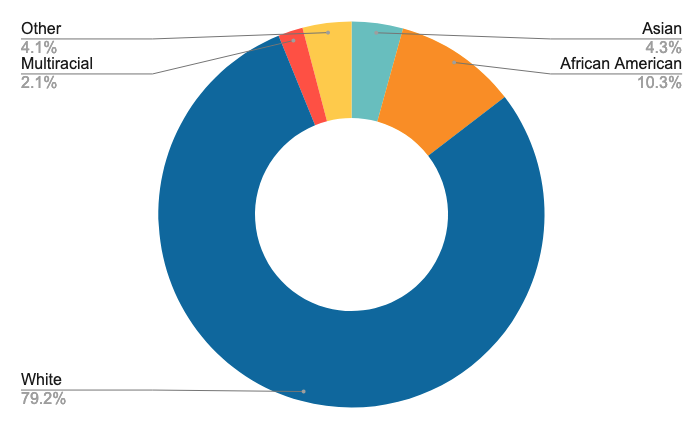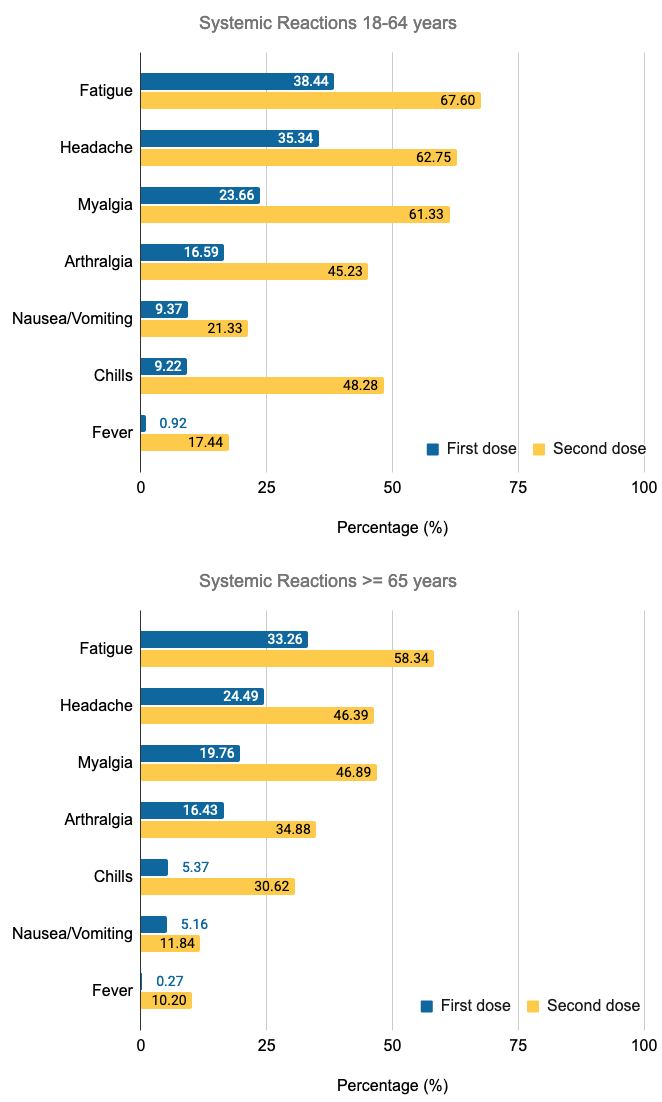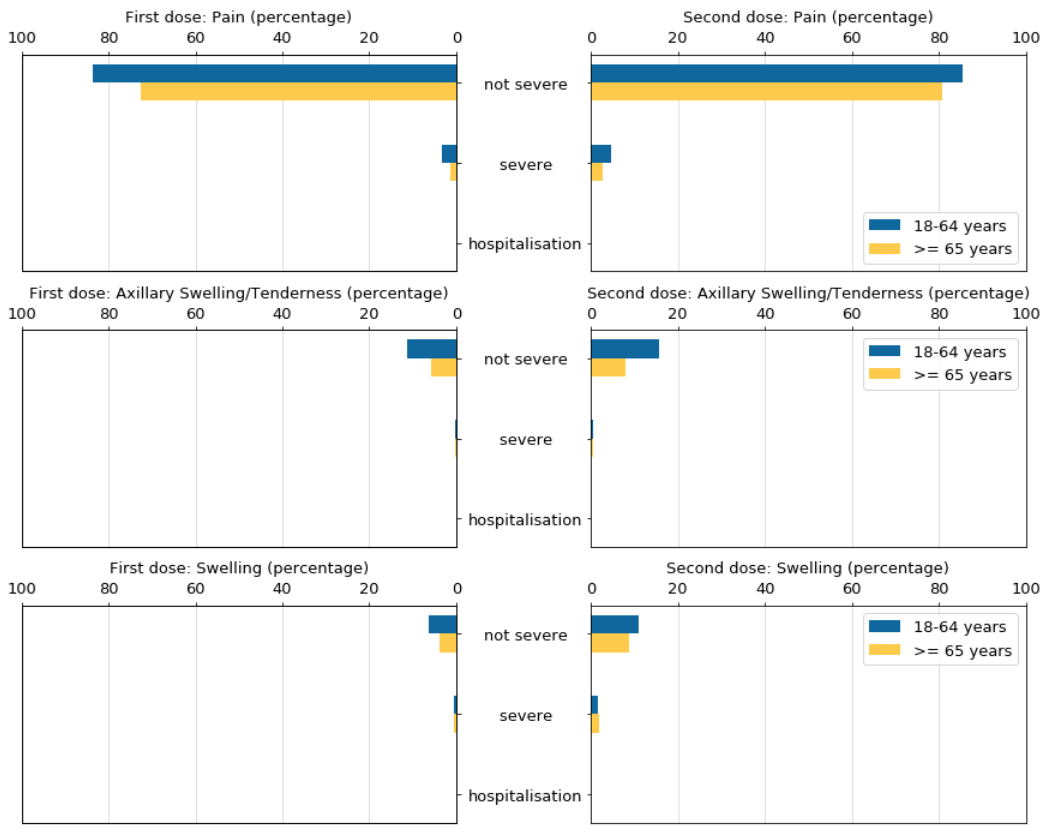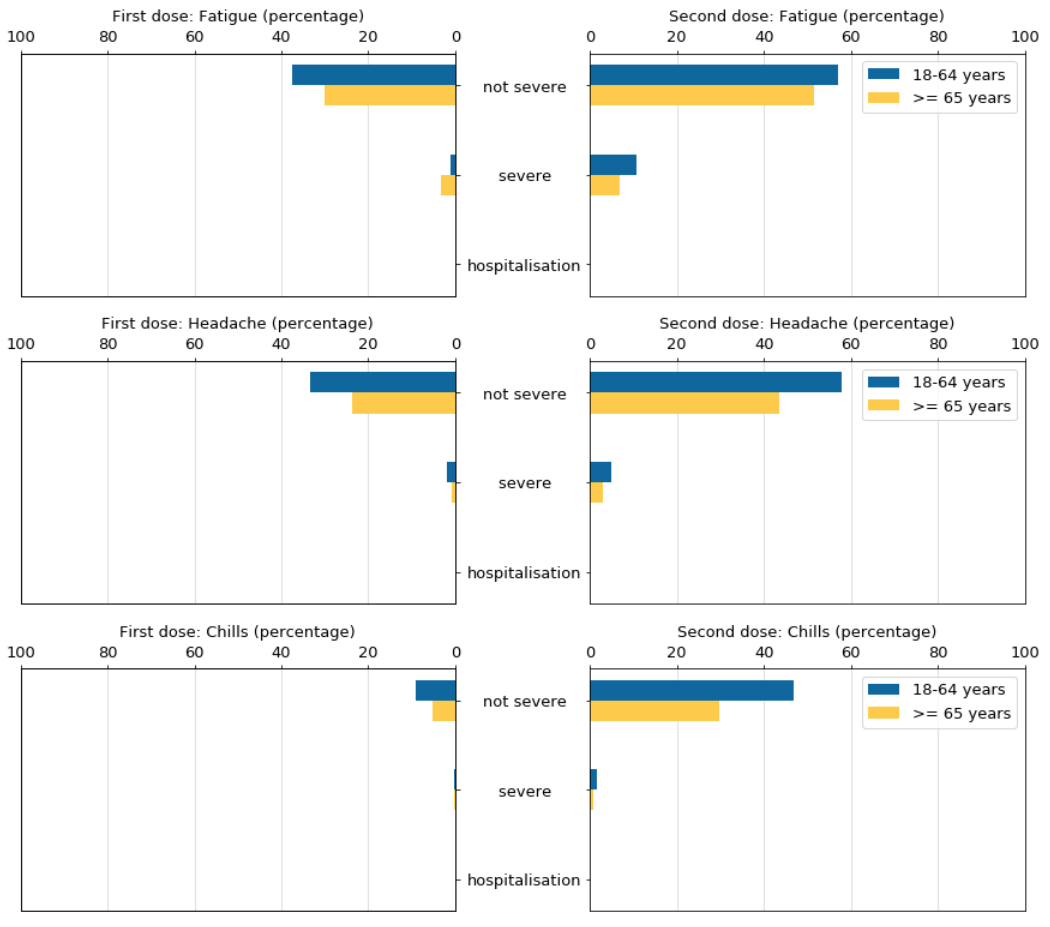Introduction
Since the beginning of 2020, people from all over the world have struggled with the COVID-19 virus, and scientists are also actively looking for solutions. In order to achieve herd immunity, the most effective method at the moment can be said to be vaccination. Various voices about the vaccine have also been on the cusp of social public opinion, and the praise or controversy about it has never stopped. And a vaccine from theoretical design to clinical trials requires too much wisdom and effort of scientists. Last time, I analyzed the adverse reactions of Pfizer vaccine, Coronavac vaccine and AstraZeneca vaccine, and my friends wanted to know the side effects of Modena vaccine.
The Centers for Disease Control and Prevention (CDC) recently released data on the response and severity of people of different ages after being vaccinated with the Moderna COVID-19 vaccine. Today, I will take you to learn more about the specific information. Before starting, introduce the following two terms that will be frequently mentioned next:
- Local reaction: A reaction that occurs at the entrance of an infected organism or injection.
- Systemic reaction: When inflammation spreads from a local area of an organ (such as the skin) to other organ systems in the body, it is called a systemic reaction.
Data background


As of November 11, 2020, 30,350 participants were randomly assigned to the vaccine or placebo group at a 1:1 ratio, with a median follow-up period of 7 weeks after the second vaccination. 75.2% of the participants in the vaccine group were between 18 and 65 years old, 47.8% were women; 79% were white, 10% were black or African American, and 4.3% were Asian participants. The median age is 53 years. 27% of the participants had underlying diseases, and 5% had major heart diseases.
Pain at the injection site is most common

Among the local reactions, pain at the injection site is a common adverse reaction of all ages, and it is most obvious after the second injection, especially for people aged 18-64 years old, the probability of occurrence is as high as 90%; compared to the pain at the injection site, redness The odds are much lower, less than 10%.

Among the systemic reactions, the overall probability of adverse reactions after the second injection is higher than that of the first injection, or even doubled. The more common ones are fatigue, headache and muscle pain; it is worth noting that the same adverse reactions As age increases, the probability of occurrence decreases. For example, among 18-64-year-olds, 68% of people will feel fatigued after the second injection, but for people 65 and older, this ratio drops to 58 %.
Different people have different levels of sensitivity

About 80% of people will experience mild or moderate pain at the injection site, and 10%-15% will experience mild or moderate axillary swelling/tenderness. In addition, 4%-6% of people have slight or moderate swelling at the injection site after the first injection, and this proportion rises to 10%-12% after the second injection.

30%-40% of people will feel mild or moderate fatigue after the first injection. After the second injection, this proportion rises to 50%-60%, and there is a 10% probability of severe fatigue. .
In a similar situation, there is the symptom of headache. The difference is that the probability of severe headache is 3%-5%.
In addition, about 5%-10% of people will feel mild or moderate chills after the first injection. The proportion of people aged 18-64 after the second injection rises to 48%. For 65-year-olds About 30% of people and above feel mild or moderate chills after the second shot.

About 20% of people will feel mild or moderate muscle pain after the first injection. After the second injection, this proportion rises to 40%-50%, and there is a 5%-10% probability that it will be severe. Fatigue.
The probability of joint pain is slightly lower than that of muscle pain. The probability of mild or moderate joint pain after the first shot is less than 20%, but after the second shot, the probability increases greatly, especially for people aged 18-64. One proportion doubles to 40%; and there is a 3%-6% probability that there will be severe joint pain.
Compared with the above adverse reactions, the probability of nausea or vomiting is not so high. After the first injection, there is a 5%-10% probability of feeling mild or moderate nausea or vomiting. This probability rises to 10%-20% after the second injection.
What should I pay attention to after vaccination?
Being vaccinated does not mean that everything will be well and that the virus will not invade. After observing, we still need to pay attention to some things:
- Avoid eating spicy and irritating foods, seafood foods, and drinking alcohol. It is recommended to drink plenty of water (source: Zhihu)
- Try to avoid strenuous exercise and keep adequate rest (source: Zhihu)
- Measures should be taken to protect yourself and others during travel (Source: CDC)
- You should still pay attention to the symptoms of COVID-19, especially when you are with patients. If you develop symptoms of COVID-19, you should be tested and self-isolate, away from others (Source: CDC)
Conclusion
Overall, in clinical trials, regardless of the first or second needle, there is about 80% probability that the injection site will feel pain, and there is a 35%-60% probability that you will feel fatigue or headache. After the second injection, the feeling will be more obvious than the first injection, but most of them are mild or moderate.
After vaccination, you should pay attention to the light diet and keep adequate rest. Even if you are vaccinated, you must pay attention to protection.
If you still want to know about the adverse reactions of Pfizer, Coxing and AstraZeneca’s COVID-19 vaccine, please click on the following article:
- Do you know the reactions of Pfizer vaccine?
- Do you know the reactions of Coronavac vaccine?
- Do you know the reactions of Oxford/AstraZeneca vaccine?
References
- Vaccines and Related Biological Products Advisory Committee Meeting, “FDA Briefing Document Moderna COVID-19 Vaccine”, December 17, 2020.
- “The Moderna COVID-19 Vaccine’s Local Reactions, Systemic Reactions, Adverse Events, and Serious Adverse Events”, www.cdc.gov. [Online]. Available: https://www.cdc.gov/vaccines/covid-19/info-by-product/moderna/reactogenicity.html
- “辉瑞-生物科技COVID-19疫苗概述和安全性”, chinese.cdc.gov. [Online]. Available: https://chinese.cdc.gov/coronavirus/2019-ncov/vaccines/different-vaccines/Pfizer-BioNTech.html
- 大众迷你仓, “新冠疫苗接种后注意事项”, zhuanlan.zhihu.com. [Online]. Available: https://zhuanlan.zhihu.com/p/368304205
- “local reaction”, medical-dictionary. [Online]. Available: https://medical-dictionary.thefreedictionary.com
- Rod Brouhard, EMT-P, “Systemic Reaction Throughout the Body”, www.verywellhealth.com. [Online]. Available: https://www.verywellhealth.com/systemic-reaction-1298693
- “moderna”, cdn.futura-sciences.com. [Online]. Available: https://cdn.futura-sciences.com/buildsv6/images/wide1920/f/9/4/f94999f310_50180650_vaccin-moderna-markus-mainka-adobe-stock.jpg